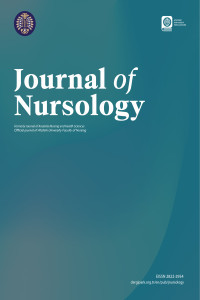About the Journal of Nursology
Journal of Nursology is a peer reviewed, open access, online-only journal published by the published by Atatürk University.
Journal of Nursology is published quarterly in Turkish and English in March, June, September, and December.
Journal History
As of 2022, the journal has changed its title to Journal of Nursology.
Previous Title
1998-2009
Atatürk Üniversitesi Hemşirelik Yüksekokulu Dergisi
ISSN: 1301-9899
Previous Title
2010-2021
Anadolu Hemşirelik ve Sağlık Bilimleri Dergisi-Journal of Anatolia Nursing and Health Sciences
ISSN: 1309-5471
EISSN: 2687-2498
Current Title
Journal of Nursology
EISSN: 2822-2954
2024 - Volume: 27 Issue: 1
Creative Commons
Journal of Anatolian Nursing and Health Sciences is licensed under a Creative Commons Attribution-NonCommercial 4.0 (CC BY-NC 4.0)


